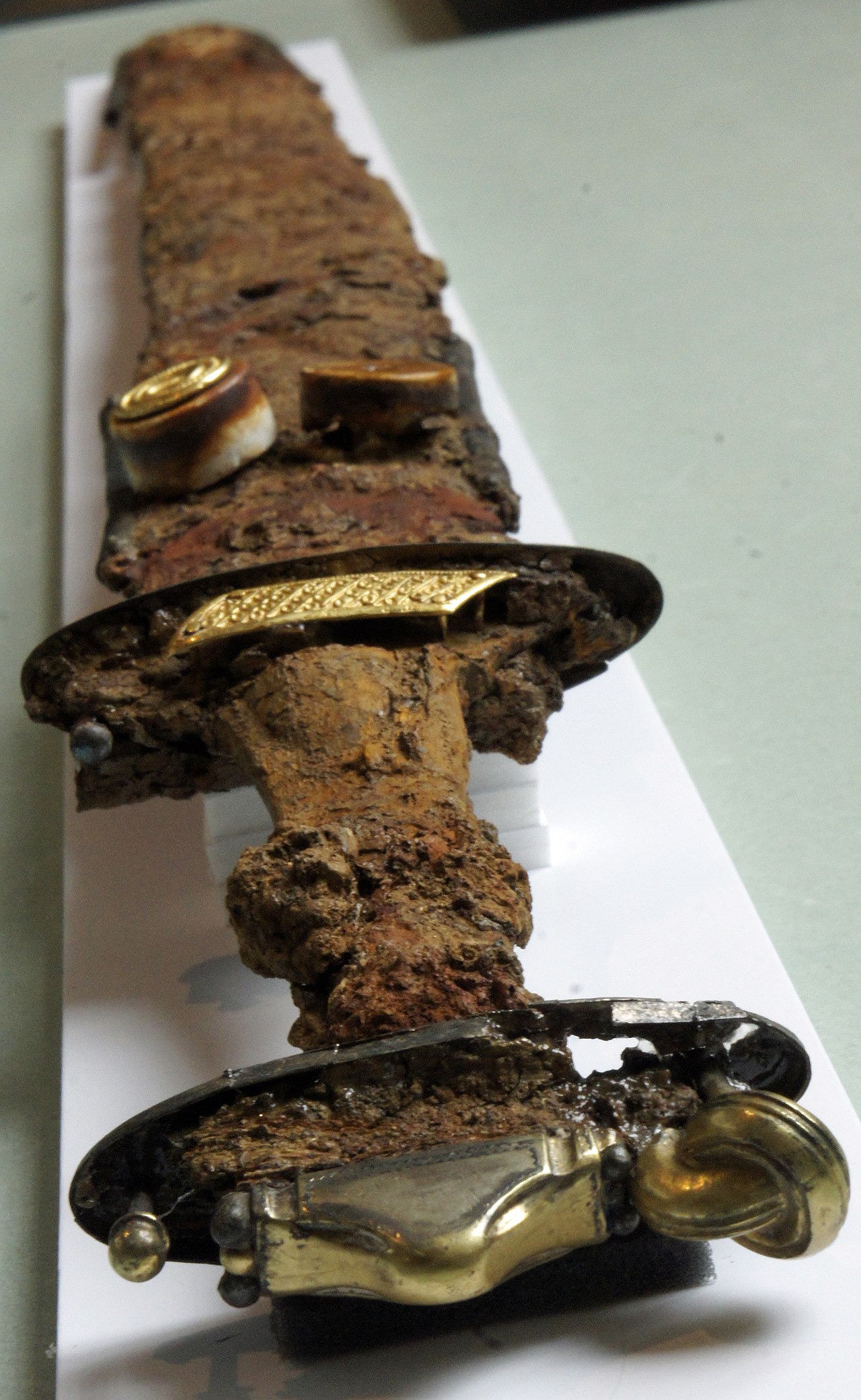Norse mythology didn’t appear in a vacuum. The stories that have been passed down to us in Eddas and sagas generally reflect a late, Icelandic flavor of broader Germanic mythology that evolved over millennia out of even earlier Indo-European mythology.
We can pretty confidently date our mythological sources based on linguistic markers and, among these, some originated in the Viking age and others were composed sometime after. But lately I’ve been looking through them for little hints at memories passed down from an even earlier time.
Here’s a fun one I found:
Sapp (2019) dated the poem Helgakviða Hjörvarðssonar in the Poetic Edda to the second half of the 10th century. It is perhaps a little less than 100 years older than the canonical “end” of the Viking age which spanned, officially, from 793 AD to 1066 AD. In this poem, our hero Helgi is given a name by the valkyrie Sváfa who also tells him the location of a magic sword:
Sverð veit ek liggja í Sigarsholmi fjórum færi en fimm tögu; eitt er þeira öllum betra vígnesta böl ok varit gulli.
Hringr er í hjalti, hugr er í miðju, ógn er í oddi þeim er eiga getr; liggr með eggju ormr dreyrfáiðr, en á valböstu verpr naðr hala.
As per Larrington’s translation:
I know of swords lying on Sigarsholm, four less than fifty; one is better than all the rest, baleful among battle-needles, inlaid with gold.
Theres a ring on the hilt, there’s courage in the middle, and terror in its point, for him who can own it; a blood-dyed snake lies along the edge, on the boss an adder chases its tail.
What’s interesting to me about this passage is the description of the sword having a ring in its hilt. Though the poem dates to the Viking age, there have been no finds of Viking age swords that can be described as having a ring in the hilt.
However, this description does match the design of certain prestige swords from the earlier Migration Period. (← Link to a photo of a sword)
The Migration Period is commonly thought to span from about 375 AD when the Huns appeared in Europe until about 568 AD when the Lombards conquered Italy. Corresponding with the fall of the Western Roman Empire, this period saw the migrations of various Germanic peoples across Europe. Visigoths ended up in modern Spain, for example. Angles, Saxons, and some others ended up in Britain.
From what I was able to dig up, the ring-sword design first shows up in the late 400s among the Franks before quickly spreading into Scandinavia and into England by way of the Anglo-Saxon migrations. The style seems to reach peak popularity in the 500s or 600s before falling out of use entirely before the beginning of the Viking Age.
Hilda Davidson describes how these swords would have been highly prestigious items generally reserved for people of high nobility in her book The Sword in Anglo-Saxon England (1998). She concludes that the ring in the hilt represents a king, as a treasure-giver, gifting rings to his followers. It would have been thought of “both as a pledge on which an oath could be sworn and as a token of the link of generosity between the lord and his followers.” (p.77.)
The ancient memory of the prestige ring-sword as seemingly characterized by the magic sword in Helgakviða Hjörvarðssonar is fascinating to me. Perhaps there are other elements of this story that originate in a time when Attila roamed continental Europe and Óðinn was still known as Wōðinaz.
